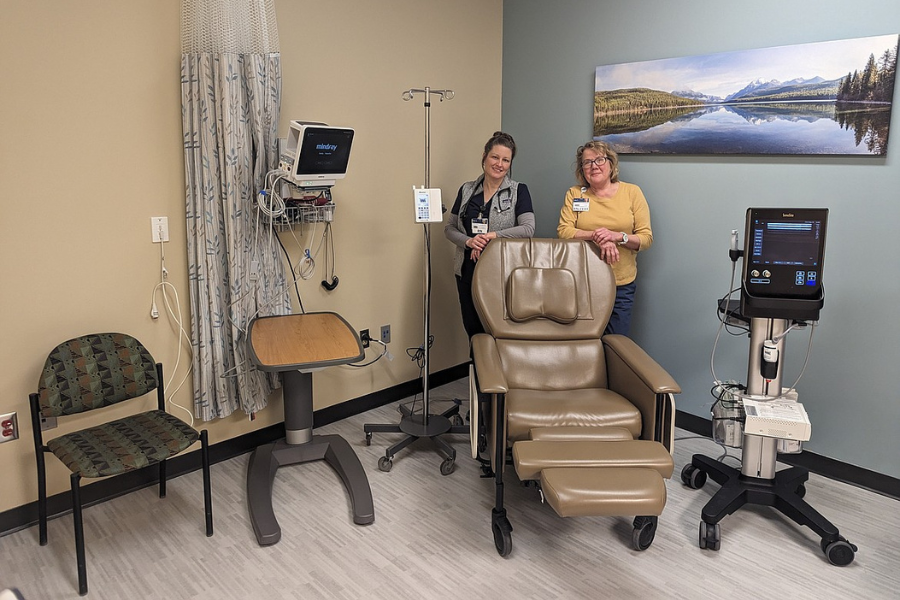In the center of Logan Health – Whitefish is a small department that emits a cozy vibe. Two nurses welcome patients, who can stay anywhere between 15 minutes and six hours. The nurses help patients settle into their own rooms, equipped with a heated reclining chair and television. The door can remain open to the nurses’ area or can be closed for more privacy.
This department is outpatient infusion, a lesser-known service at Logan Health – Whitefish, yet a vital benefit to the community. Often associated with cancer treatment, infusion is more than chemotherapy. For example, infusion therapy may be prescribed by a health care provider for chronic pain, such as migraines. Providers may prescribe it for bacterial infections that can be treated with infusion, as well as bleeding disorders, all of which are on an outpatient basis.
Some medications are best administered by injecting directly into veins, or intravenously. This way, the medication can be absorbed by the body more efficiently and effectively. Infusion allows for a slow and continuous injection. Due to the clinical nature of these treatments, they must be prepared and administered by health care professionals.
 “As an outpatient service, we can meet the needs of community members and keep people from needing to be admitted into the hospital,” says Marissa Hepner, director of outpatient infusion at Logan Health – Whitefish. “We help them to optimize their health enabling them to maintain their livelihood.”
“As an outpatient service, we can meet the needs of community members and keep people from needing to be admitted into the hospital,” says Marissa Hepner, director of outpatient infusion at Logan Health – Whitefish. “We help them to optimize their health enabling them to maintain their livelihood.”
Hepner oversees a staff of eight nurses, all of whom are specially trained for infusion therapy. The department offers a wide range of treatments, excluding chemotherapy, which is available at Logan Health Medical Center in Kalispell.
Open seven days per week, 7 a.m. to 7 p.m. for the convenience and steady demand, the department recently expanded, adding a fourth room that provides patients with a chair or the option of a bed for longer procedures.
During infusion therapy, patients may also experience the hospital’s complimentary therapies, including aroma therapy, massage and pet therapy. They also can order items from the Valley Café menu.
The two nurses on shift keep patients comfortable and take vitals while monitoring the procedure. If there are complications, the nurses are accessible to respond.
Because many treatments can last for weeks, patients see their infusion nurses more often than their providers, making them a valuable conduit of care.
“We’re the middleman for the patient,” says Melanie Cahill, infusion nurse. “Patients see us more than they see their doctor, and we can reach their doctor more easily and advocate for their needs.”
The nurses often speak to providers during a patient’s visit. This provides an opportunity to order tests to be run by the laboratory while the patient is in the hospital.
It’s no surprise that the nurses form a relationship with their patients and families. When a patient reaches the end of their treatment, the nurses celebrate their ‘graduation’ with a card or cake.
“We listen and provide socialization,” adds Shanti Lackey, infusion nurse. “It’s an intimate setting, which allows us to know patients, they tell us we’re like family.”
